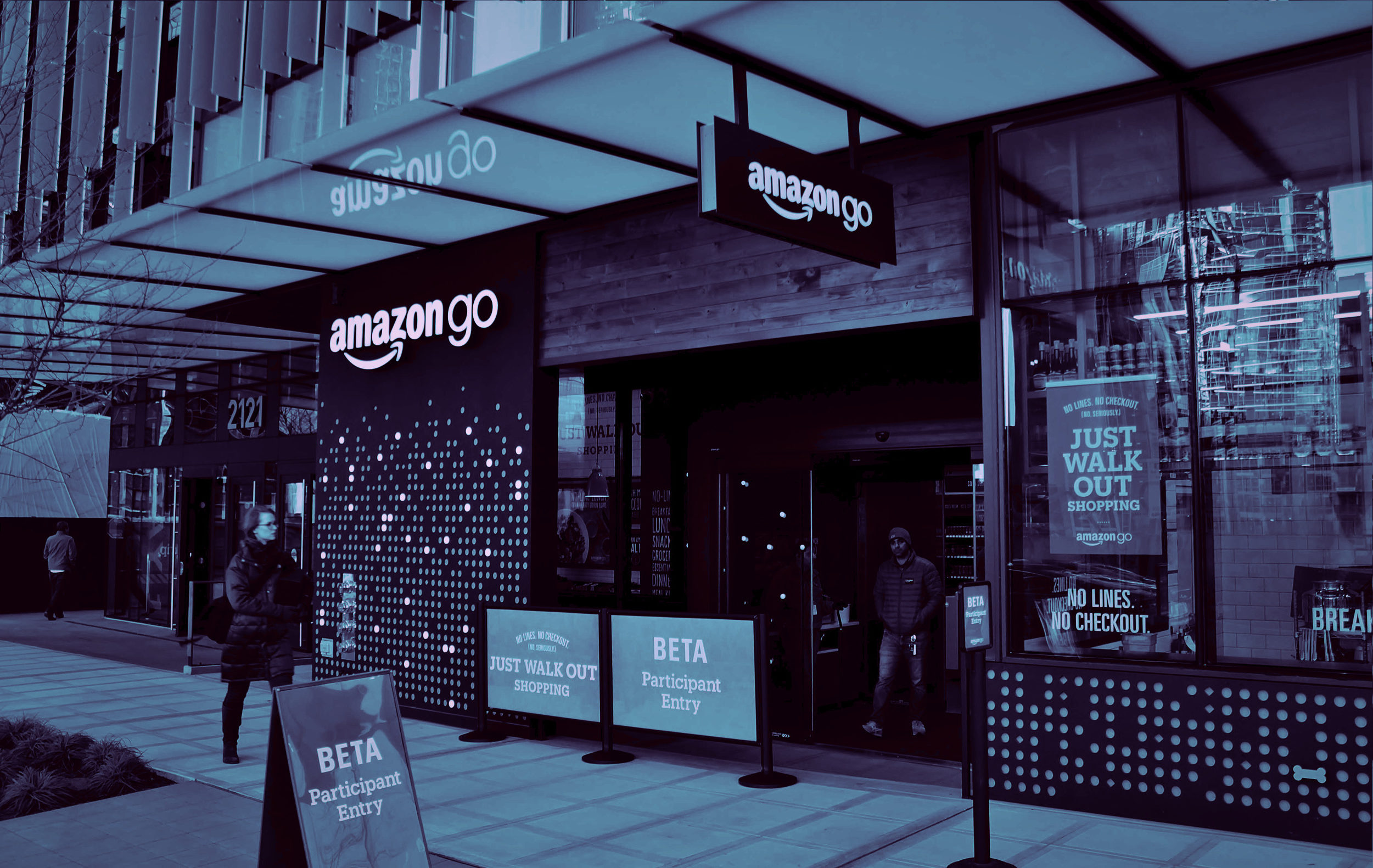Timex says we spend 6 months of our lives waiting in line. Silicon Valley believes that number should be zero. Or at least zero when it comes to grocery shopping. Starting with the Amazon Go stores, cashierless stores have been an optimistic look into efficiency. Amazon spurred others to think up different approaches from Smart Carts to Cashierless Snack Shacks to Scan, Bag, & Go technology. So where do we stand in 2019?
Marketing the Cashierless Store
First off, Trigo Vision has created the best marketing of Cashierless Stores yet.
We’ve mostly been sold on the idea that we should never wait in line again. However, I look at people in long grocery lines and they’re scrolling, reading or watching whatever is on their phones. It’s as if they’ve forgotten they’re even in a line. So the “waiting in line” narrative isn’t as compelling as it once was. Our attention is occupied, regardless.
However, Trigo is leaning into the idea that “self-service is no service”. That the self-checkout kiosks, self scan, and self-navigation are all poor grocery store technologies that have worsened customer service. And they’re right. We’re not trained on how to use this stuff.
Personally, this is a far more compelling way to sell this idea to the public and more importantly, the grocery chains.
Snack Shacks and Smart Carts
Amazon promised big things for their cashierless technology, but has delivered minimally. To date, there are 16 Amazon Go stores with 2 more on the way. A long stretch from the 3,000 they promised by 2021 (which we have reason to believe won’t be happening). It’s possible that they might reposition around opening their Go stores in airports and movie theatres – more along the lines of a Nanostore.
The industry might be heading toward nanostores, anyways, since it’s a smaller investment.
The Sacramento Kings Stadium is working with Zippin to create a small cashierless store at their stadium. AiFi has positioned their entire cashierless tech around Nanostores (or Snack Shacks as they call them). Basically, they’re about half the size of a 7-11 with many of the same snacks.
I ran into a lot of these cashierless Snack Shacks in Japan. They work surprisingly well and securely (but that’s also a country with very little crime). I’m skeptical of their application here in the States.
Then again, instead of creating smaller, standalone cashierless stores, there’s the Smart Cart approach that would keep our big grocery chains intact.
Caper and Imagr are leading the charge with their Smart Cart technology which is a high-tech shopping cart that recognizes and tallies the items as they enter and leave the shopping cart. I’m not sure how it takes into account the items in your hand.
Seems to me that your average grocery store could implement a fleet of these carts without needing to overhaul their entire store. Also, it’s an idea I’ve been keen on for some time.
Will We Miss Cashiers?
It’s easy to get caught up in the novelty of the cashierless idea. While it makes grocery shopping more accessible for many, it makes it completely inaccessible for the rest.
There’s the obvious, non-smartphone wielding consumer who loses. But, the biggest loser here is the elderly (whether they have a phone or not).
For my grandma, grocery shopping is one of her most joyous events of the week. She loves chatting with the people at the deli counter. Smiling at new faces. And chatting with the cashiers and baggers as she’s leaving.
You take away the cashier and you take away one of the few regular social interactions she gets outside of our family. And I guarantee there are many other elderly in the same position.
Unfortunately, I don’t think this is enough of a reason to stop the momentum of this technological advance. I’m sure it’s something that Amazon has no problem sacrificing.
Who Will Win?
The last thing I’d like to cover is why Amazon is the clear front-runner in the cashierless stores. It’s not necessarily because of their size, although that’s helpful in deploying resources.
Rather, they have two distinct advantages:
One, their cloud computing background makes it simpler and less costly to operate one of these cashierless stores. With all the sensors, cameras, and vision technology at play, you’re talking about a major data bill. To Amazon, it’s just a quick call to AWS. Any competitor must incur that cost (which is why Microsoft is making big plays in the Grocery OS space as well, to cash in on those cloud dollars).
Second, Amazon is working with a massive database of existing customer accounts, which are needed in order to charge you before you leave the cashierless store. If you’ve ever bought something on Amazon, then you have an Amazon account that can be linked to their Amazon Go app. It’s a simple process. Competitors will need customers to set up accounts and put in their payment information. This might turn customers away.
These two advantages put Amazon far ahead of everyone else in this race to deploy cashierless stores. But we all know that anyone can take the cake in the end.
